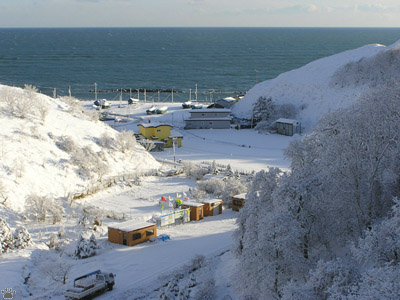
Small fishing village east from Kushiro, Hokkaido.
Part 2. Hokkaido
For the Japanese, Hokkaido is what Alaska is for Americans, or Siberia is for Russians. This relatively cold and somewhat remote wilderness doesn't even have shinkansen trains!
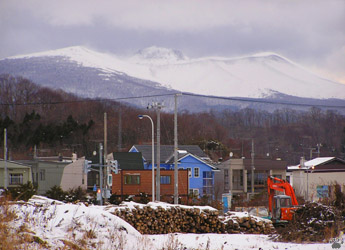
Under a volcano. Shiraoi town, Hokkaido. |
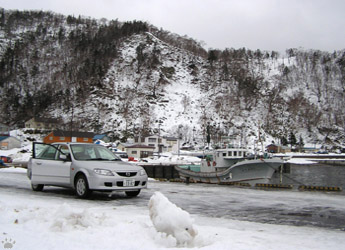
End of the road. Most parts of Shiretoko Nat'l Park have no road access. Hokkaido. |

View of Kunashir (one of Kuril Islands) from Hokkaido. |
Of course, to see real wilderness, you'd have to go to Kuril Islands - thankfully, still in Russia and more or less safe from development.
|
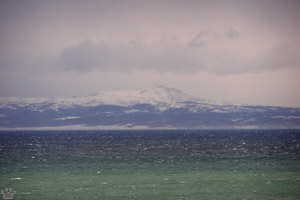
View of Kunashir (one of Kuril Islands) from Hokkaido. |
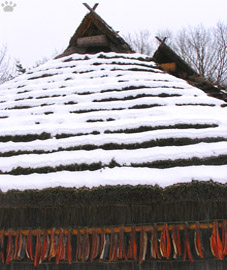 |
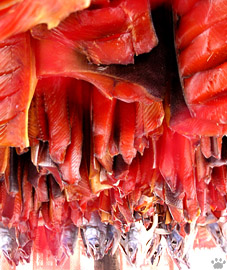 |
 |
| Smoked chum salmon (Onchorhynchus keta) in an Ainu village, Hokkaido. |
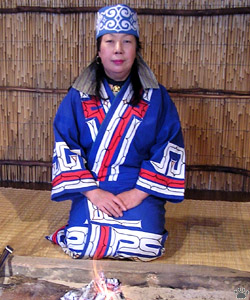
Ainu lady in traditional clothing, Hokkaido. |
Hokkaido was conquered by the Japanese in the 19th century. Its native inhabitants were subjected to all kinds of discrimination and occasionally genocide. Nivkh people of the extreme northwest now survive only in Russia. The Ainu have lost most of their culture and language. Although there is now some cultural revival, it's mostly tourist-oriented. It is virtually impossible to see a traditional Ainu house where people actually live; very few people speak the language.
|
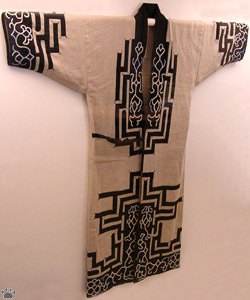
Traditional clothing, Ainu Museum near Shiraoi, Hokkaido. |
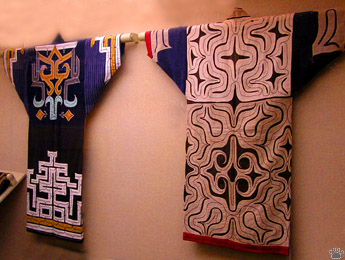
Traditional clothing, Ainu Museum near Shiraoi, Hokkaido. |
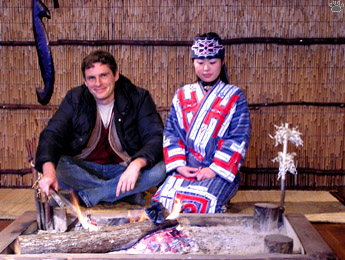
Visiting an Ainu village. Hokkaido. |

Ainu woman, Hokkaido. |
Destruction of this beautiful culture in both Japan and Russia was a great loss for anthropology and historical science. The Ainu language is totally isolated, and even their race is a mystery: theories range from Caucasian to Australo-Papuan origin. Culturally, they are very close to coastal peoples of Russian Far East, especially the Nivkhs, but clothing design and some other aspects of their culture show similarities with American Indian tribes of the Pacific Northwest, such as the Haida. Recent data seems to suggest that people similar to the Ainu in physical appearance have colonized North America before the ancestors of the present-day Native Americans. |
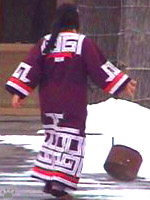
Ainu woman, Hokkaido. |
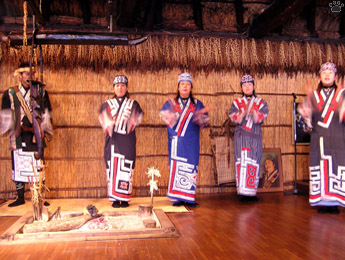
Ainu dance, Hokkaido. |
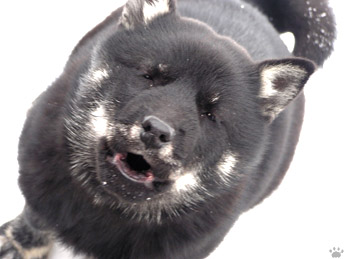
Ainu dog - a unique breed now on verge of extinction. Hokkaido. |

Vargan music is popular among many peoples of NE Asia. |
The Ainu were mostly hunter-gatherers, although they also planted some crops. As the Japanese took over their land, they switched to commercial fishing and hunting. The creatures they considered sacred were brown bear and giant Blakiston's fish-owl (below). |

Fire song, Hokkaido. |
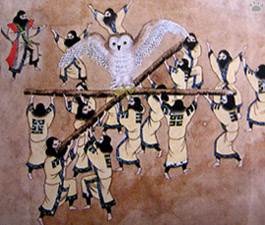
Old Japanese painting showing Ainu owl dance. Ainu Museum
near Shiraoi, Hokkaido.
|

Fish-owls. Contemporary Ainu
sculpture. Shiraoi, Hokkaido.
|
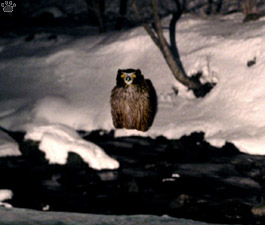
Blakiston's fish-owl (Bubo blakistoni) is one of the world's
largest and rarest owls. Shiretoko National Park, Hokkaido. |
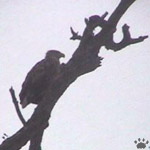
White-tailed sea eagle (Haliaeetus
albicilla), Shiretoko Nat'l Park. |
As the Japanese moved north, the Ainu fought three battles with them, but always lost due to lack of firearms. They also traded with them. The Ainu were great hunters; they used akonit-poisoned weapons to kill everything from ducks to whales. Trade-oriented hunting resulted in the extinction of sea otters and sea lions in Hokkaido waters. Wintering washi (sea eagles) were hunted for their feathers and became very rare, but now they are recovering. Smaller white-tailed sea eagle is more common on rivers, while Steller's sea eagle - along the coast. |
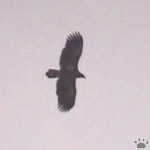
Immature white-tailed sea eagle,
Shiretoko Nat'l Park. |
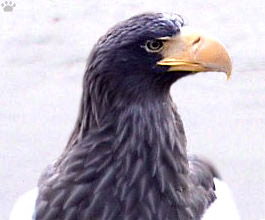
Steller's sea eagle (H. pelagicus), Shiretoko Nat'l Park.
|
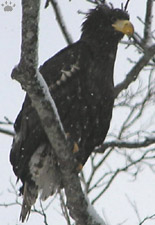
Immature Steller's sea eagle, Shiretoko.
|
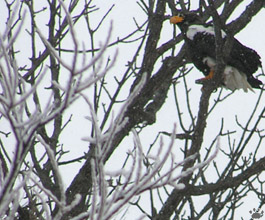
Steller's sea eagle, Furenko Nature Park.
. |
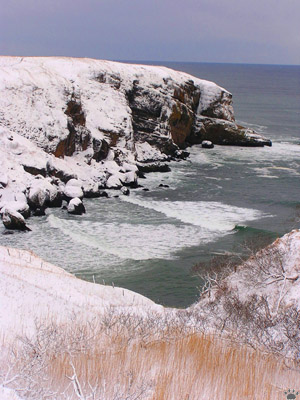
Hokkaido coast east from Kushiro. |
The coast of Northern Hokkaido is an unfriendly world of rocky cliffs, talus slopes, and densely forested mountains. In summer, the meadows are covered with wildflowers, and fall colors are great. But in winter, only seabirds and people live here.
|

Hokkaido coast, Furenko Natural Park. |
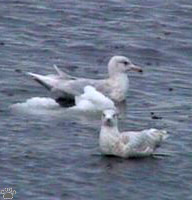
Glaucous gulls (Larus hyperboreus), Furenko.
|
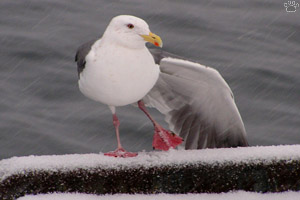
Slaty-backed gull (L. schistisagus), Shiretoko Nat'l Park.
|
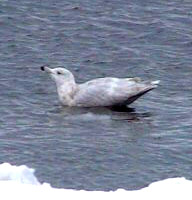
Immature glaucous gull, Furenko Natural Park. |
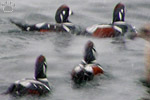 |
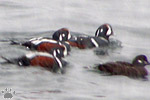 |
But seabirds are not the main ornithological attraction of the island. |
 |
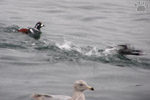 |
| Harlequin ducks (Histrionicus histrionicus), Shiretoko Nat'l Park. |
Harlequin ducks chasing each other, Shiretoko Nat'l Park. |
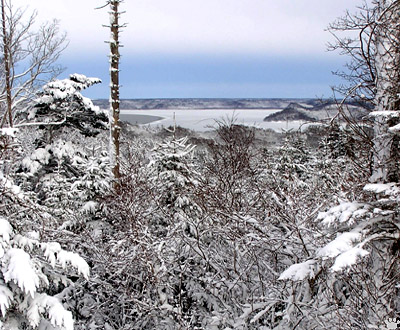
Coastal lagoon, Furenko Natural Park, Hokkaido. |
Part 3: Hokkaido (continued)
Back to Part 1 Home
|